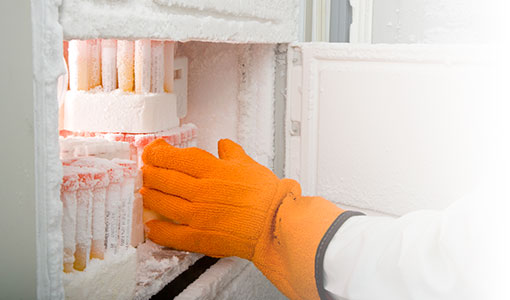 Biobanks, registries and biorepositories have been with us for at least three decades, but as with most systems that rely on data, management has become more complex than ever. Not only must you track physical specimens, but also the growing volume and types of data associated with them.
Biobanks, registries and biorepositories have been with us for at least three decades, but as with most systems that rely on data, management has become more complex than ever. Not only must you track physical specimens, but also the growing volume and types of data associated with them.
Systems must manage, in an organized, accessible and compliant fashion:
- the physical collection, storage, utilization and distribution tracking of biological material
- all clinical data (medical and epidemiological) and patient consents linked to each specimen
This is true whether you’re operating any one of a variety of biobanks (there are more than 300 biobanks, tissue banks or biorepositories, as tracked by SpecimenCentral):
- academic/university research-based biobanks, including project-scale
- vast population- or disease-based biobanks
- for-profit commercial biobanks
- virtual biobanks, which do not handle physical specimen collection
The Role of Biobanking
Biobanks are designed and set up to help researchers and others leverage a bounty of samples and linked donor data to help them in their research and diagnostics. The ability to access the patient profile of any given specimen is critical to understanding results, as is the ability to search for and find samples that meet research requirements. Equally as important is the ability to prove that you’ve maintained a chain of custody for a specimen or the patient’s wishes according to consents granted when the specimen samples were donated.
All that requires sophisticated software to:
- address the growing size and diversity of biobanks
- meet the need for high quality, richly annotated biospecimens
- comply with regulatory requirements (21 CFR Part 11), patient privacy (HIPAA) and ethics policies
Can Your LIMS Do That?
Capturing sample data is the domain of Laboratory Information Management Systems (LIMS). A single, centralized LIMS, purpose-built for biobanking, can manage and integrate all aspects of a biorepository – even ones that span multiple physical locations.
These LIMS must adhere to the typical biorepository workflow:
In addition, system governance must help users comply with regulations, maintain patient privacy, and, of course, be easy to use as researchers go about their work. By offering built-in workflows that guide laboratory personnel through their daily tasks, a purpose-built LIMS helps to improve data accuracy, increase process efficiency, and facilitate compliance.
The Purpose-Built Biobanking LIMS: An Integrated Biorepository Workflow
What’s needed, then, to be “purpose-built” for biobanking?
At the heart of a purpose-built biobanking LIMS is visualization, consent management, specimen accessioning, request management, and a genealogy viewer.
- A visualization tool gives users a hierarchical view of specimen flow, actually showing the freezers and the boxes and plates within it, to find samples, assess storage utilization, and identify available freezer space for optimizing storage.
- Consent management functionality provides the ready access to digitized consent forms that are linked to associated biospecimens. Being able to track patient consent documentation helps maintain the donors’ wishes and preferences and, of course, remain compliant with regulations.
- Specimen accessioning is the process of recording specimens and subject information, using a controlled vocabulary, or standardized terminology. When everyone involved is speaking the same language, it makes it much easier to manage and get the most out of the biobank.
- Request management in a centralized LIMS is expedited because researchers can more easily search the specimen collections and related clinical data. Managing requests can also help to prioritize processing.
- Finally, a genealogy viewing function is essential for that “cradle-to-grave” knowledge of a biospecimen’s aliquots, derivatives and pooled samples.
Leveraging a Centralized LIMS for Biobanking
From managing the storage and maintenance of annotated specimen data to following the chain of custody and making determinations about a sample quickly and accurately, a biobanking LIMS requires standard features to meet the needs of the community.
At LabVantage, for example, we designed our biobanking LIMS to address these concerns using a centralized LIMS for efficient, accurate, and secure tracking of biobank samples and consents.
Want to learn more? Read our latest article in Genetic Engineering & Biotechnology News.
Interested in learning how a LIMS built specifically for Biobanking can better support your organization by tearing down your data silos and maximizing the insights you draw from your biobank data? Contact us today.



